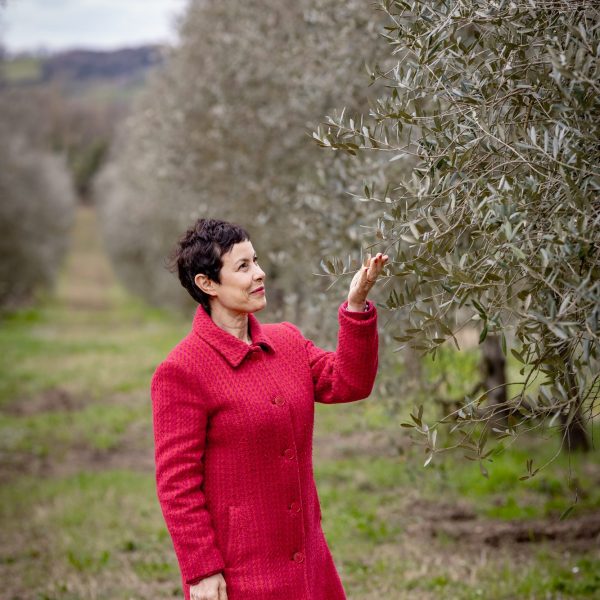Lugnano in Teverina (Tr)
History
Lugnano, one of the most beautiful villages in Italy in Umbria, is a labyrinth of alleys, arches, and staircases that retain the flavor of ancient times.
The Roman village of Luchiano, nestled in the woods, was located lower down compared to the current settlement. The current position dates back to the 7th century when, perhaps due to barbarian invasions, but more likely due to the spread of malaria, some inhabitants sought refuge on the rocky spur where the village now stands.
During the High and Late Middle Ages, Lugnano experienced progressive social and economic development, which culminated in its transformation into a municipality around the year 1000.
From the 11th to the 14th century, Lugnano was subject to various lords who vied for control of the territory. It was long allied with the city of Orvieto, with which it shared the conflict between the Guelphs and the Ghibellines.
After the rule of Orvieto, Lugnano became part of the possessions of the Papal States.
Address: Lavignano di Teverina, 05020 Lavignano di Teverina TR
Phone: +39 0744 902844
Culture
Lugnano was known as Terre di Lugnano in Roman times, a name that emphasizes the surrounding territories, indicating its vocation as an agricultural center. Evidence of this can be found in the archaeological findings at the site of Poggio Gramignano, collected at the Antiquarium of the Civic Museum of the town.
Beautiful are its enclosing walls, the “ramparts“, the ancient buildings, and its towers among which stands the “Tower of Palombara“, so named because of a dove carved on its exterior.
Entering from Porta Sant’Antonio, on the left, you’ll find a small square equipped with a well to refresh those entering the village.
Dominating the Palazzo Vannicelli in Piazza della Rocca are the two Convents, that of S. Francesco to the south and that of the Capuchins to the north, and in the center, the most imposing, Palazzo Pennone, now the town hall. It’s an elegant building with ashlar and travertine portals, curiously bisected in the middle by a gallery of the same name.
Ascending to the square, you encounter one of the most remarkable examples of Romanesque architecture in the entire Umbria region, the Collegiate Church of Santa Maria Assunta, built between the 11th and 12th centuries on a pre-existing parish church. Innocent III, who promoted its construction, left his mark with an eagle sculpted on the facade. It features a rose window with two mullioned windows on the sides and a beautiful portico supported by smooth and twisted columns. The band that connects the lowered arches is decorated with Cosmatesque motifs depicting the Evangelists.
Inside, the altar houses a 15th-century alabaster Crucifix, while the apse features a 16th-century triptych and an intriguing Crucifixion painting from the Giottesque school.
Palazzo Fabbrica
The Fabbrica can be considered the symbol or memory of Lugnano’s agricultural economy and attempts at industrialization. Dating back to the early 1900s, it was initially used as a lightbulb factory and later as a pasta factory. It is currently a cultural center that also houses the Municipal Antiquarium.
For a breathtaking panoramic view, descend to the gardens of the Ex Orto Ungari. From here, you can see the Castle and Lake Alviano, the bend of the Tiber River. Further south, the imposing Cimini mountains stretch to Mount Soratte in the direction of Rome.
Lugnano’s affiliation with the Church’s Patrimony since the 8th century resulted in numerous significant buildings being erected both inside and outside the walls.
Churches outside the walls include the Church of Sant’Antonio Abate, dating back to the early 16th century, dedicated to rituals related to agricultural work; the Church of Madonna dei Pini, from the mid-17th century, originally a funerary chapel of the Vannicelli family; the Church of Santa Lucia, considered one of Lugnano’s oldest, located in the monumental cemetery where Roman burial artifacts are found, although the current building has been recently reconstructed in neo-Gothic style.
Furthermore, you can admire the Convent of San Francesco, built in 1229 on the same site where the Saint had preached and performed a miracle in 1212: the Saint freed a child from a wolf’s attack with the help of a duck.
Then, there’s the Convent of Sant’Antonio dei Cappuccini, nestled in a beautiful grove of oak trees, the Church of “Maestade”, and the Church of Santa Maria di Ramici. Near the Church of “Maestade” lies an ancient fountain, with a large covered washhouse added to it.
Nature
The Palliccio Trail
It’s a nature trail located in southern Umbria, near the hamlet of Porchiano del Monte. The trail is equipped with signage dedicated to the flora and fauna, which find an ideal environment here.
Path:
The trail is circular and has two entrances: one to the north and one to the south.
The northern entrance is near the Porchiano del Monte – Attigliano provincial road and is marked by a bulletin board and a red and white arrow.
The southern entrance is reachable from the same road, but before reaching Attigliano, you need to turn left towards Giove, and then left again before a small bridge, near a photovoltaic field. About one kilometer away, you’ll find the second bulletin board with all the directions.
It takes about an hour to complete the trail.
Along the trail, there are both directional arrows and signs providing information about the flora and fauna present.
Ramici Castle
The fortress dates back to the 12th century, but only ruins remain today.
Perched atop a series of cliffs overlooking the Tiber River, the itinerary to reach and appreciate the panorama below starts from the valley. After passing under the railway bridge, you follow the drivable road on the right.
In the area around, you can spot remains of an ancient Roman-era kiln and the rustic villa of Poggio Gramignano from the 1st century BC.
In the flat area, you’ll find the Ramici Sulphur Springs, known for their therapeutic properties.





